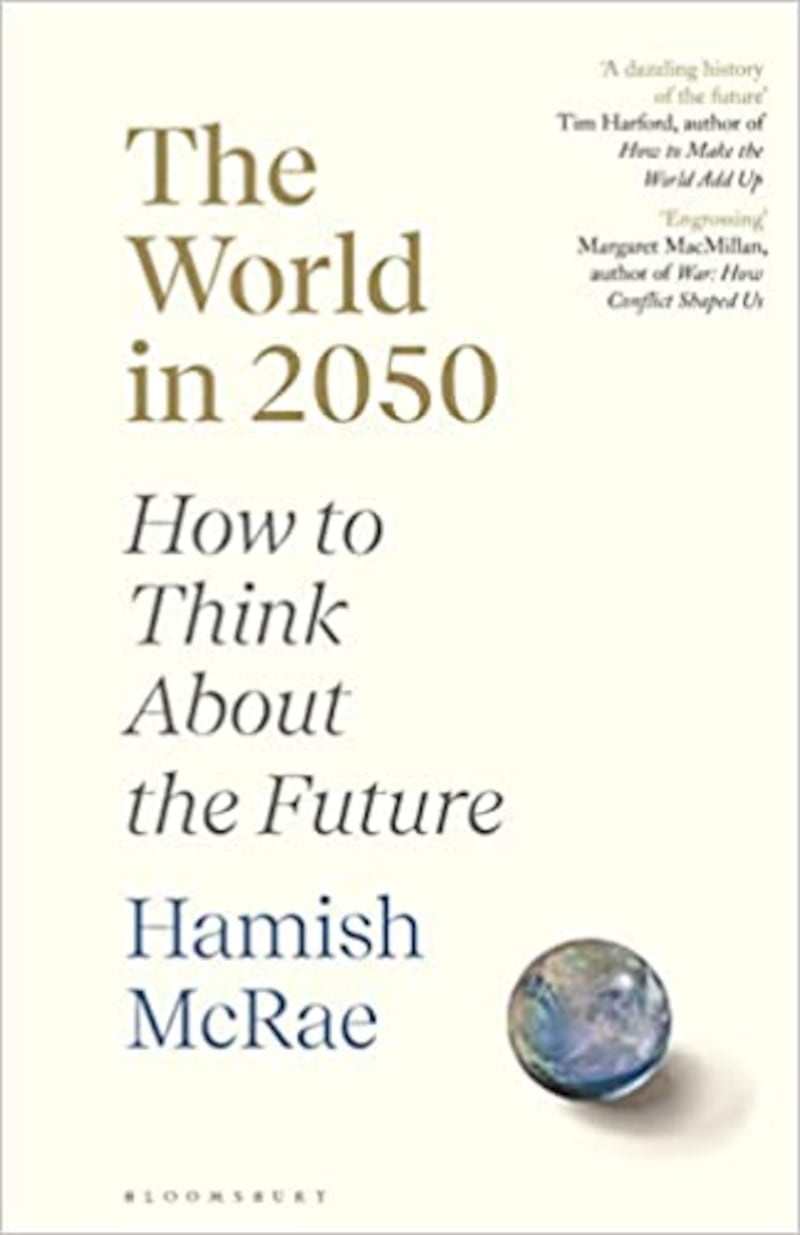Imagining the future is essential to the craft of writing science fiction. Predicting the future is central to the work of many economists. There is more overlap between acts of imagination and prediction than either profession might admit.

An understanding of the dynamics that shape our present and the use of judgment to fill the voids left by simple extrapolation are some of the common traits.
There is a critical difference. Accuracy is irrelevant to acts of imagination. It is essential to models of prediction.
So, economists face a tougher test. Their work is tested against unfolding economic events. The assumptions of their models are rigorously examined. The inner cogs of the mind of a science fiction writer are mercifully free from such scrutiny.
What is the National Gallery’s scanner that cost €125,000 and what would it be used for?
‘We grew up Irish Catholic’: How Nicola Coughlan got raunchy Bridgerton scenes cut
The Last Showgirl review: Pamela Anderson has found the right role at the right time
‘I’m 50 this year and feel a bit like a teenager with my problem. My best friend has fallen in love’
The economic commentator Hamish McRae has therefore chosen the harder trade as his latest work, The World in 2050, predicts our global future.
The difficulties of such efforts are many, not least the risk that predictions can be overtaken by events. The references to the war in Ukraine must have been speedily included.
McRae uses a clear structure to confront this enormous predictive task. He begins with thematically describing the world as it is, including developments in technology, climate and governance.
This lays the foundation for predictions for different regions, from the Americas to Africa and the Middle East. The book concludes with big themes that will shape our future.
The tone of this work is positive. The broad economic prediction is that “In 2050, some two-thirds of the world’s population will be middle class or rich.” This change will not just occur within countries, the author argues that “There will be more wealthy and middle-income countries – and people – and fewer poor ones.”
The early pages of this book contain an unnerving factual error. McRae is critical of the introduction of the euro, arguing that many European problems “have stemmed from the introduction of the euro”. He predicts European decline and views divergence within the European Union as a positive development. I strongly disagree with these predictions and his assessment of Europe, but it’s the standard fare of political and economic debate.
But what is extraordinary is the conclusion that “those non-euro European economies that have performed relatively well have been the UK and Ireland”. Our euro zone membership is an essential feature of the modern Irish economy. For the writer, or his publisher, to be unaware of this or to ignore it raises troubling issues of accuracy.
This is even more extraordinary given the Irish heritage of the author. In the acknowledgments, he writes that “My interest in trying to understand how the world economy will evolve goes back to my upbringing in Ireland” and that “The further advantage in being brought up in Ireland was that, as in all small countries, you are forced to think global.”
This global appreciation is evident in an early chapter, The World We Live in Now, containing a series of mini-essays that begin with the United States and Canada and conclude with Australia. An impressive amount of information and insight is contained in each section.
The key forces of change are described, beginning with the impact of demography. By 2050, there is likely to be a global population of just under 10 billion people, an increase from 7.7 billion in 2019.
Predictions are made by geography. These forecasts include: a comfortable and federal future for the United Kingdom, serenity for the Nordic countries, India growing to become the largest economy in the world and continued American success.
The prediction for Europe is bleak, with the decline of the European Union into a looser association with diminishing political and economic power. Conversely, the Anglosphere could grow in status.
While acknowledging that “it is almost unthinkable to suggest that by 2050 Ireland will have left the EU”, a number of scenarios are suggested where this occurs. This is of little surprise given the error regarding our membership of the euro zone.
The author concludes with the case for “broadly positive outcomes for the welfare of our species and of our planet”. Sources of disruption are analysed, from American political instability to pandemics. This is followed by a description of stabilising influences, from changes in the nature of globalisation to a co-operative China.
The conclusion is unsatisfying. Many predictions are hedged, many scenarios acknowledge the use of judgment. This may be unavoidable, in our era where the pulses of change are amplified by our global interdependencies and use of communication technologies, but it frequently occurs.
I strongly differ with some of the predictions in The World in 2050, including the future of Europe and the scale of the impact of technology on our societies. But it is only with the passage of time that it will be clear whether this book is an act of folly or a work of wisdom.
Paschal Donohoe is the Minister for Finance and president of the Eurogroup
















